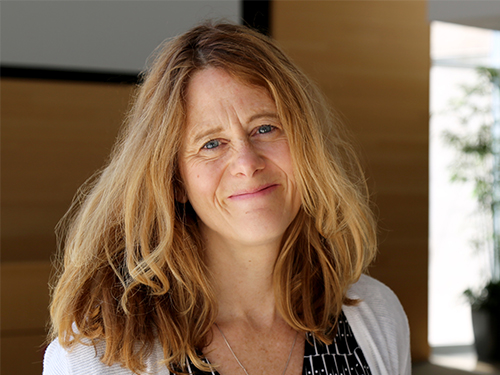The new edition of Susan Eaton’s “The Other Boston Busing Story,” which tells the story of America’s longest-running voluntary school desegregation program, comes as the United States faces a racial reckoning.
“One of the things that I learned from writing this book is that real change, whether in individual attitudes or in institutional racism, doesn’t just happen by giving some people new opportunities,” says Eaton, director of the Sillerman Center for the Advancement of Philanthropy. “There are too many forces fighting it and working against racial justice. There has to be continuous struggle and continuous intention.”
That’s why Eaton has made significant updates in the new edition, published this month by Brandeis University Press. The basis of the book is 65 interviews with African American adults who participated in METCO (Metropolitan Council for Educational Opportunity, Inc.), a 54-year-old program that has enabled children of color living in Boston to attend school in predominantly white suburban districts. In this new edition, she highlights the activism of parents, educators and young people working to create truly integrated schools across the country, as well as a robust new base of research about the benefits of school integration for education, health and social mobility.

The book initially came out of Eaton’s doctoral thesis at Harvard’s Graduate School of Education. Growing up in the Boston suburbs, Eaton witnessed the way segregated schooling helped fuel prejudice and ignorance in her own community and was haunted by television reports of racial violence in Boston. Later, as a newspaper reporter, she frequently covered battles in school districts over expanding opportunities for Black students in predominantly white and privileged areas. She decided to go back to school to research METCO, the only state effort to circumvent the racial boundary lines created by extreme housing segregation rooted in racial discrimination.
Eaton found that participants perceived the benefits of the program to be tangible and useful. Immersed in an institution where all students were directed to college, they were guided in the appropriate classes and tests to take. They also developed a network, both within the METCO community of Black alums, fellow Black students and Black parents, as well as with white students and teachers in their classes, that was useful in college and beyond.
“Nearly all of the students talked about the comfort they developed in entering and persisting in white settings where they could find new opportunities,” she says.
However, the experience of leaving their neighborhoods to be one of a handful of Black students surfaced a host of challenges. Students encountered frequent negative comments about urban life and stereotypical thinking about African Americans. They perceived that teachers and principals had unwarranted low expectations of them, even steering them to less competitive colleges; and their classes rarely recognized the contributions or perspectives of Black Americans.
Despite these challenges, “the majority said they would absolutely put their kids in the METCO program because of the vast inequalities in society, and the advantages they think a well-resourced school can provide for their kids,” Eaton says.
In the second edition, Eaton places her findings in the context of new activism and research.
“When the book first came out in the early 2000s, the education policy discourse did not include exploration of implicit bias or articulation of the precise way that white supremacy pervades institutions. The conversation has now really shifted and changed,” she says. “People advocating for policy change and educators, parents and young people fighting for more inclusion and culturally responsive curricula and practice must work together. Otherwise you can end up with diverse schools that are still unequal and harmful to students of color.”
On the activism side, she highlights the work of IntegrateNYC, the National Coalition of School Diversity, and Integrated Schools, all of whom are working to create truly integrated schools based on the values of racial equity, justice and anti-racism.” She also cites the leadership of the METCO staff, who are working with suburban educators to enhance curricula and pedagogical practice in what are still predominantly white schools.
She also writes about new research from leading academics like Rucker Johnson at UC Berkeley’s Goldman School of Public Policy, about the benefits of integration in schools for all students—especially Black children. She also explores social psychology research from scholars such as Linda Tropp at the University of Massachusetts, which shows that integrated schools carry vast potential for reducing stereotypical thinking and prejudice.
“I hope the book inspires more people to tell their own stories, and to build policy and practice agenda for racial justice around that,” she says. “As a white woman, I want to take a step back and listen to the growing number of people of color, especially young people, who have taken leadership of this issue and have made such important contributions.”

